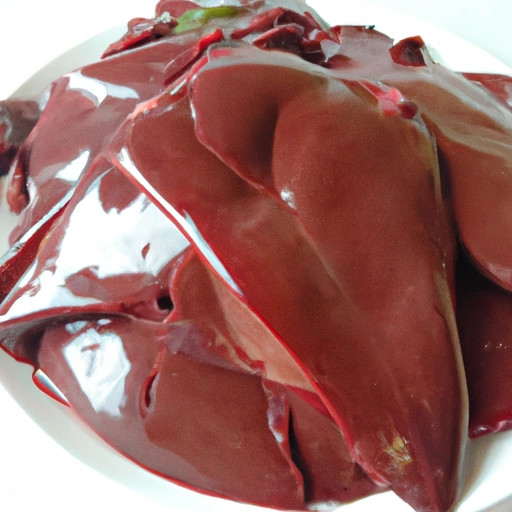Liver
Description

Liver is a type of organ meat or offal that is highly valued in many cuisines around the world for its rich flavor and nutritional profile. It is the edible part of the liver from various animals, including cows, chickens, ducks, lambs, and pigs. Liver can be cooked in a variety of ways and is often incorporated into dishes for its distinctive taste and texture.
Common uses
Liver is commonly used as a main ingredient in pâtés, spreads, and sautés. It can also be found grilled, fried, or baked in various recipes. In some cultures, liver is minced and mixed with fillers like breadcrumbs or grains to make liver dumplings or liver sausage.
Nutritional value
Calories
Beef liver contains approximately 175 calories per 100 grams (3.5 oz/0.22 pounds).
Protein
Liver is a fantastic source of high-quality protein, providing about 26 grams per 100 grams (3.5 oz/0.22 pounds).
Fat
Despite being low in fat, liver contains about 4.5 grams of fat per 100 grams (3.5 oz/0.22 pounds), with a mix of saturated and unsaturated fats.
Carbohydrates
Liver has a minimal carbohydrate content, typically less than 1 gram per 100 grams (3.5 oz/0.22 pounds).
Vitamins
Liver is packed with vitamins, particularly vitamin A and several B vitamins including B12, riboflavin, and folate.
Minerals
It is also rich in essential minerals such as iron, copper, zinc, and selenium.
Health benefits
The high vitamin and mineral content in liver can support immune function, aid in red blood cell production, and maintain healthy vision and skin. Its protein and iron content are especially beneficial for muscle growth and preventing anemia.
Potential risks
Due to its high vitamin A content, consuming liver in large quantities can lead to hypervitaminosis A, which can be toxic. Additionally, liver can accumulate toxins from the environment, so sourcing liver from organically raised animals is recommended.
Common recipes
Liver can be used in a variety of recipes such as liver and onions, liver pâté, liverwurst, and foie gras. It is also a key ingredient in traditional dishes like haggis and boudin noir.
Cooking methods
Cooking methods for liver include pan-frying, grilling, baking, and poaching. It is often important to not overcook liver to prevent a tough and grainy texture.
Pairing with other ingredients
Liver pairs well with bold flavors like onions, bacon, and acidic elements like vinegar or lemon juice. It also complements sweeter elements like caramelized onions or apples.
Summary
Liver is a nutrient-dense food ingredient with a historic place in many culinary traditions. It offers numerous health benefits due to its high content of protein, vitamins, and minerals. Despite its potential risks if over-consumed, liver remains a versatile and savory addition to a variety of dishes around the world.